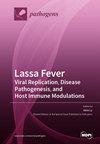细菌操纵:隐形细菌科西埃拉如何操纵细胞。
IF 3.3
3区 医学
Q2 MICROBIOLOGY
引用次数: 0
摘要
伯纳蒂克希菌是Q热的病原体,是一种传染性很强的病原体,能够侵入从肺泡巨噬细胞到滋养细胞等多种细胞类型。在宿主细胞内,它建立了一个名为Coxiella-containing液泡(CCV)的复制生态位。这是由细菌通过4b型分泌系统(T4SS)分泌到宿主细胞质中的效应蛋白驱动的。在无性系培养和诱变方面的进展使克希氏菌效应蛋白得以表征,揭示其宿主靶点和细胞颠覆策略。这篇综述强调了最近对科希氏菌效应蛋白及其对宿主过程的操纵的见解,从囊泡运输到先天免疫。本文章由计算机程序翻译,如有差异,请以英文原文为准。
Bacterial Puppeteering: How the Stealth Bacterium Coxiella Pulls the Cellular Strings.
Coxiella burnetii, the causative agent of Q fever, is a highly infectious pathogen capable of invading diverse cell types, from alveolar macrophages to trophoblasts. Within host cells, it establishes a replicative niche named Coxiella-containing vacuole (CCV). This is driven by effector proteins secreted by the bacterium into the host cell cytoplasm via a Type 4b Secretion System (T4SS). Advances in axenic culture and mutagenesis allowed the characterization of Coxiella effector proteins, revealing their host targets and strategies of cellular subversion. This review highlights recent insights into Coxiella effector proteins and their manipulation of host processes, from vesicular trafficking to innate immunity.
求助全文
通过发布文献求助,成功后即可免费获取论文全文。
去求助
来源期刊

Pathogens
Medicine-Immunology and Allergy
CiteScore
6.40
自引率
8.10%
发文量
1285
审稿时长
17.75 days
期刊介绍:
Pathogens (ISSN 2076-0817) publishes reviews, regular research papers and short notes on all aspects of pathogens and pathogen-host interactions. There is no restriction on the length of the papers. Our aim is to encourage scientists to publish their experimental and theoretical research in as much detail as possible. Full experimental and/or methodical details must be provided for research articles.
 求助内容:
求助内容: 应助结果提醒方式:
应助结果提醒方式:


